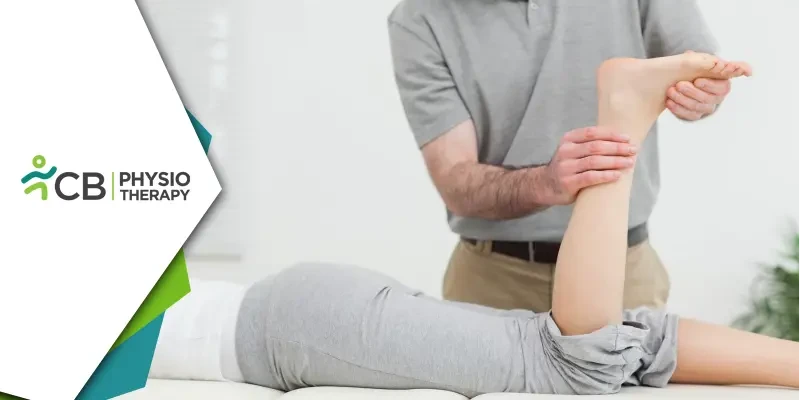Tendon injuries, such as tendinitis and tendinosis, are common and can significantly impact daily activities and athletic performance. Proper rehabilitation is essential for restoring tendon function, reducing pain, and preventing re-injury. Physiotherapists play a crucial role in guiding patients through this process, ensuring a successful and safe recovery. This blog outlines the do's and don'ts of tendon rehabilitation as recommended by physiotherapists.
Understanding Tendon Injuries
Before diving into rehabilitation strategies, it's important to understand what tendons are and how they can be injured. Tendons are strong, fibrous tissues that connect muscles to bones, allowing for movement and force transmission. Tendon injuries typically result from overuse, improper technique, or sudden trauma, leading to conditions like tendinitis (inflammation) or tendinosis (degeneration).Do's of Tendon Rehabilitation
1: Seek Professional EvaluationConsult a physiotherapist for an accurate diagnosis and tailored rehabilitation plan. Self-diagnosis can lead to improper treatment and prolonged recovery.
2: Rest and Protect the Injury
Do: Allow the affected tendon to rest and avoid activities that exacerbate the pain. Use protective gear or supports if necessary to prevent further injury.
3: Gradual Return to Activity
Do: Gradually reintroduce activities to avoid overloading the healing tendon. Start with low-intensity exercises and progressively increase the intensity and duration as tolerated.
4: Strengthening Exercises
Do: Incorporate eccentric strengthening exercises into the rehabilitation program. These exercises involve lengthening the muscle-tendon unit while it is under tension and are particularly effective for tendon healing.
5: Flexibility and Range of Motion
Do: Include stretching exercises to maintain and improve flexibility and range of motion in the affected area. Tight muscles can put additional stress on tendons.
6: Proper Technique and Posture
Do: Ensure that exercises and activities are performed with proper technique and posture. Poor mechanics can contribute to tendon injuries and impede recovery.
7: Cold and Heat Therapy
Do: Use ice to reduce inflammation and pain in the acute phase of injury. As the injury progresses, heat therapy can be beneficial to increase blood flow and promote healing.
8: Nutrition and Hydration
Do: Maintain a balanced diet rich in vitamins and minerals that support tissue repair, such as vitamin C, zinc, and omega-3 fatty acids. Staying hydrated is also crucial for overall tissue health.
9: Regular Monitoring and Adjustments
Do: Regularly monitor the patient's progress and adjust the rehabilitation plan as needed. This ensures that the program remains effective and aligned with the patient's recovery trajectory.
Don'ts of Tendon Rehabilitation
1: Ignoring PainDon't: Ignore pain or push through it. Pain is a signal that something is wrong and continuing to stress the injured tendon can lead to further damage.
2: Rushing the Recovery Process
Don't: Rush the rehabilitation process. Tendon healing takes time, and pushing too hard too soon can set back progress and increase the risk of re-injury.
3: Overloading the Tendon
Don't: Overload the tendon with excessive exercise or activity. Gradual progression is key to preventing additional stress on the healing tendon.
4: Neglecting the Surrounding Muscles
Don't: Neglect the muscles surrounding the injured tendon. Strengthening the entire kinetic chain can provide better support and reduce strain on the affected tendon.
5: Skipping Warm-Up and Cool-Down
Don't: Skip warm-up and cool-down routines. Proper warm-up increases blood flow and prepares the muscles and tendons for activity, while cool-down helps in recovery and reduces muscle soreness.
6: Inadequate Rest
Don't: Ignore the importance of rest. Adequate rest is crucial for tissue repair and recovery. Overtraining can delay healing and exacerbate the injury.
7: Poor Nutrition
Don't: Underestimate the role of nutrition in tendon healing. Poor dietary habits can impair the body’s ability to repair tissues effectively.
8: Repetitive Strain
Don't: Engage in repetitive activities that strain the injured tendon. Identifying and modifying or eliminating these activities is essential to prevent re-injury.
9: Inappropriate Use of Modalities
Don't: Misuse therapeutic modalities such as ultrasound, electrical stimulation, or laser therapy without professional guidance. These should be used appropriately and in conjunction with other rehab strategies.
10: Self-Diagnosis and Treatment
Don't: Attempt to diagnose and treat tendon injuries without professional help. Misdiagnosis and improper treatment can worsen the condition and prolong recovery time.
Tendon rehabilitation is a critical aspect of recovery from tendon injuries. By following the do's and avoiding the don'ts outlined in this guide, physiotherapists can help patients achieve optimal recovery outcomes. Remember, patience and consistency are key to successful tendon rehabilitation. With proper guidance and a well-structured rehab plan, patients can return to their daily activities and sports with restored function and reduced risk of re-injury.

